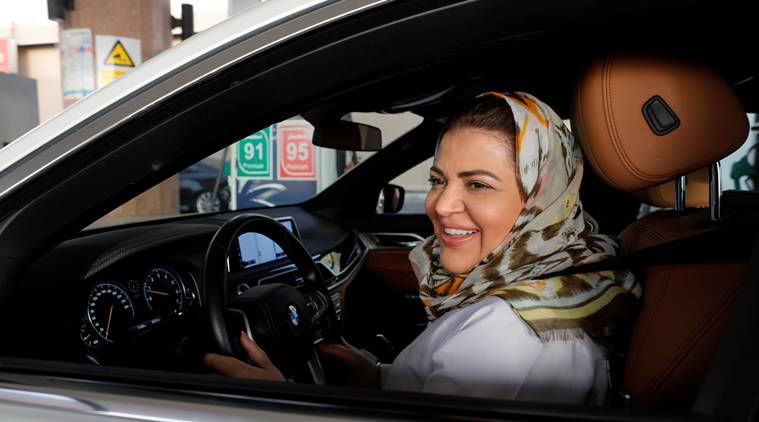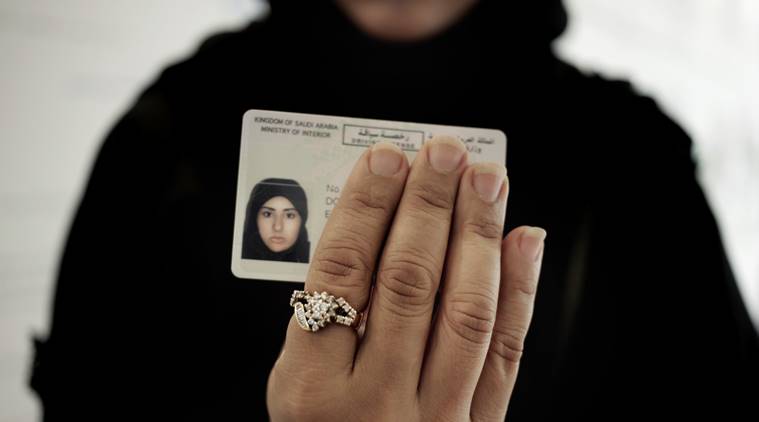 Dr Samira al-Ghamdi, a practising psychologist, drives her car out in her neighbourhood while going to work, in Jeddah, (REUTERS/Zohra Bensemra)
Dr Samira al-Ghamdi, a practising psychologist, drives her car out in her neighbourhood while going to work, in Jeddah, (REUTERS/Zohra Bensemra)
In what is being viewed as a historic moment in the conservative Kingdom of Saudi Arabia, the country’s women took to streets on Sunday, steering their way through traffic as the decades-long ban that prohibited women to drive has officially ended.
A royal decree was issued in September 2017 by the Saudi Foreign ministry stating that the ban would be lifted on June 24, 2018. The order mentioned that a male guardian wouldn’t be required for women to attain a driving license or accompany them while driving.
Here’s everything that you need to know about the historic moment that took years of struggle and activism by women’s rights advocates across the Gulf nation.
Why were women not allowed to drive?
The Monarch Kingdom follows a strict brand of Sunni Islamic law known as ‘Wahhabism’ that promotes patriarchy and the veiling of women. Also, the law in Saudi Arabia makes it compulsory for every woman to have a male guardian, who can either be a father, son or relative. Women in Saudi Arabia are expected to have the consent of their guardian for virtually everything, including access to government services, travel etc.
Why was the ban lifted?
The long-term demand for social reforms, including the right to drive, began in 1990 when more than 40 women drove their cars in the capital city of Riyadh to mark the first-ever public demonstration against the ban.
The move to allow women to drive comes as part of a series of social and economic reforms known as ‘Saudi Vision 2030’. The reforms are spearheaded by Saudi Arabia’s 32-year-old Crown Prince Mohammed bin Salman, who is being viewed as a promoter of human rights and women empowerment. The ‘Saudi Vision 2030’ particularly aims to reduce the Kingdom’s dependence on oil, expands its economy and develop public service sectors.
The document mentions Saudi women as ‘great asset to the nation’ and aims to increase there participation in the workforce to 30 per cent by 2030.
What happened after the ban was lifted
Following the announcement, the government began the process of issuing driving licences to women in the country. On June 5, ten Saudi women were issued licences after they exchanged their international licences at the General Department of Traffic in various cities, according to the Saudi Press Agency (SPA).
 In this June 23, 2018 photo, a Saudi woman covering her name holds her new car license at the Saudi Driving School inside Princess Nora University in Saudi Arabia. (AP Photo/Nariman El-Mofty)
In this June 23, 2018 photo, a Saudi woman covering her name holds her new car license at the Saudi Driving School inside Princess Nora University in Saudi Arabia. (AP Photo/Nariman El-Mofty)
The Saudi Ministry of Information, in a statement, said that over 2000 licences were expected to be issued. Various training centres and driving schools across the country went operational where women could learn driving through simulators.
How the International community reacted
The United Nations Secretary-General Antonio Guterres described the moment as “an important step in the right direction”.
I welcome Saudi Arabia’s decision to lift the ban on women drivers. An important step in the right direction.
— António Guterres (@antonioguterres) September 27, 2017
Organizations such as Amnesty International and Human rights watch, while welcoming the decision, called for more reforms.
“The lifting of the ban is testament to the bravery and determination of the women’s rights activists who have been campaigning on the issue since the 1990s, and the activists following up their ground-breaking work in subsequent campaigns since 2011”, said Samah Hadid, Amnesty International’s Middle East Campaigns Director.
Human Rights Watch called for attention to the women who are languishing behind bars after being imprisoned for protesting against the driving ban. “There can be no real celebration on June 24 while the women who campaigned for the right to drive and their supporters remain behind bars,” said Sarah Leah Whitson, Middle East director at Human Rights Watch
Prior to the change in the law, Saudi Arabia was the only country in the world that did not allow women to drive.